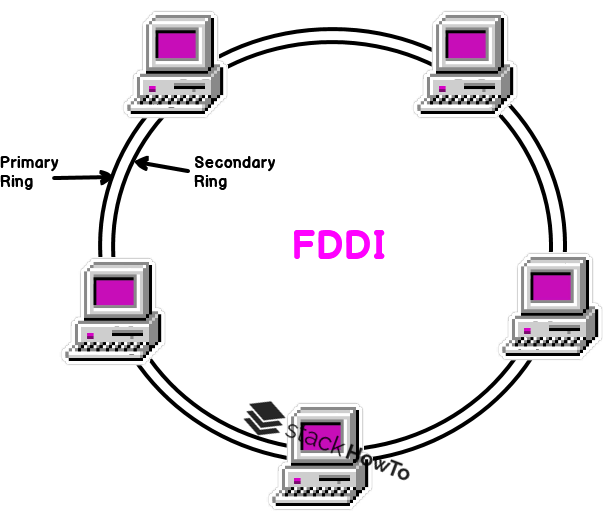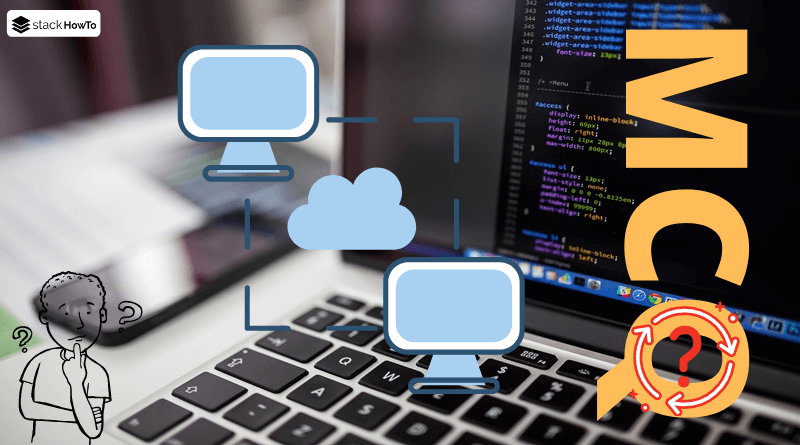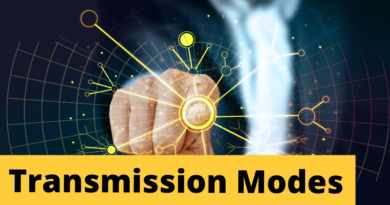FDDI Topology
FDDI (Fiber Distributed Data Interface) technology is a network access technology on fiber-optic lines. It is in fact a pair of rings (one is called “primary”, the other, allowing to catch up the errors of the first, is called “secondary”). The FDDI is a token ring topology with error detection and correction (this is where the secondary ring becomes important).

The token circulates between the machines at a very high speed. If the token does not arrive after a certain time, the machine considers that an error has occurred on the network.
The FDDI topology is very similar to the token ring topology, except that a computer in an FDDI network can also be connected to an MAU hub in a second network. This is called a biconnected system.
Fiber Distributed Data Interface (FDDI) is a type of LAN or MAN computer network that allows multiple LANs to be interconnected at a speed of 100 Mbit/s over fiber optics (which allows it to reach a maximum distance of 200 km).
FDDI was created in 1986 as X3T9.5 by ANSI and was standardized as IS9314 by ISO.
Advantages of FDDI Topology:
The FDDI is much more advantageous than the token ring because if one of the rings is defective, the network continues to function. In fact, one of the rings can catch and correct the errors of the other and vice versa.





